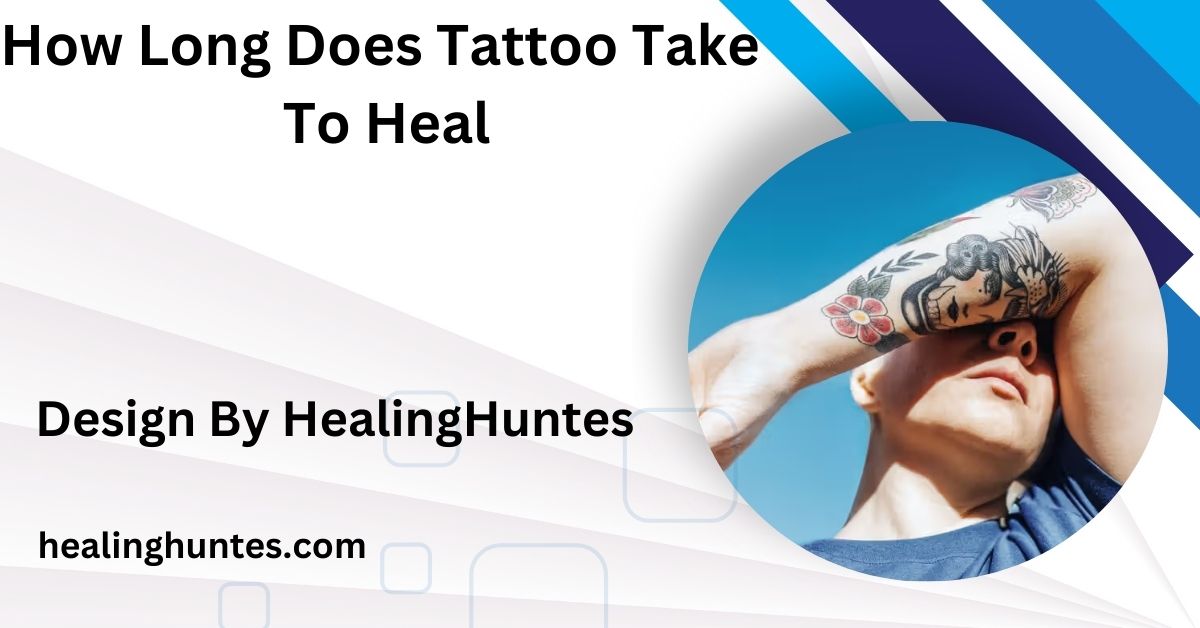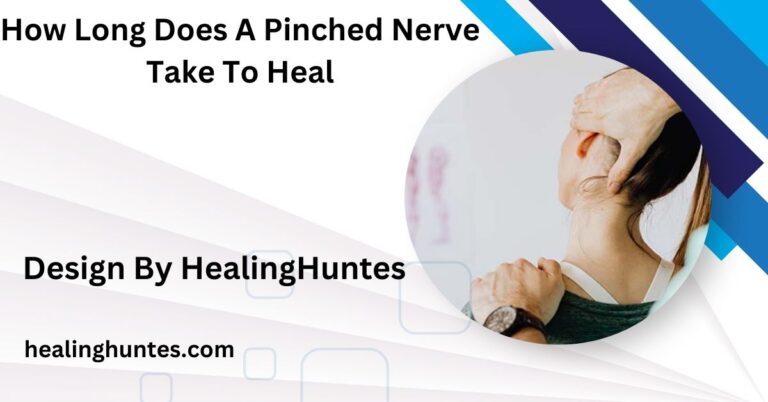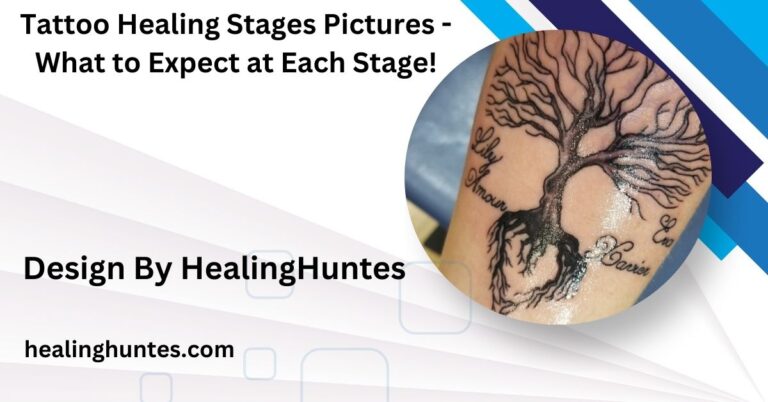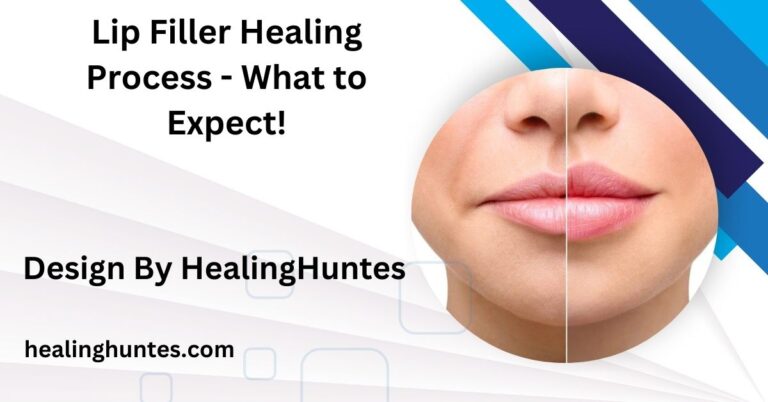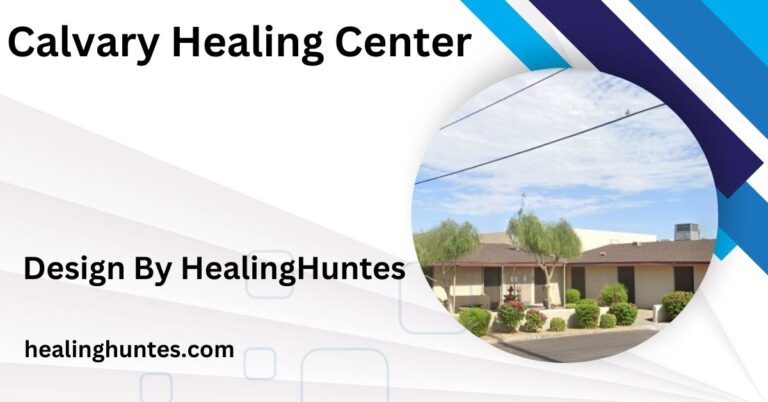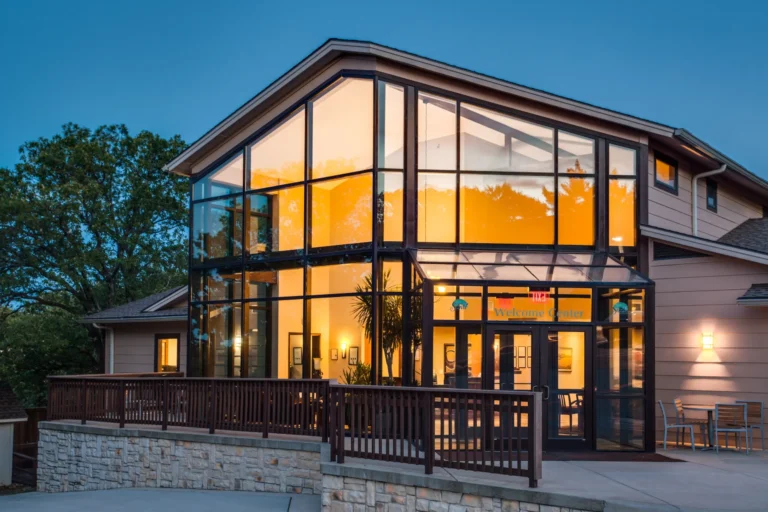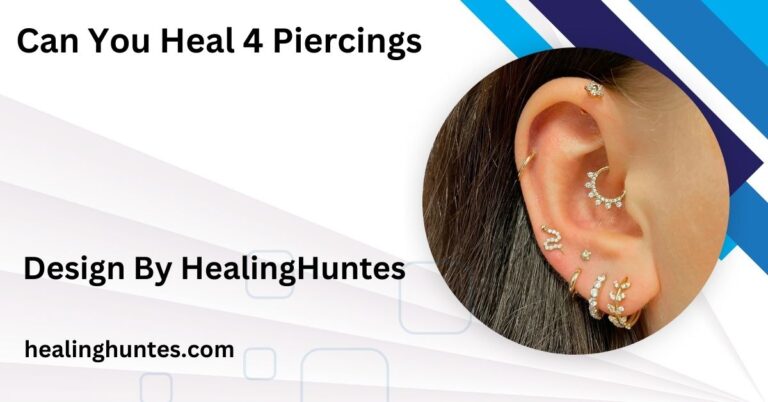How Long Does Tattoo Take To Heal – Tattoo Healing Timeline!
On average, a tattoo heals in 2 to 4 weeks on the surface, but deeper layers may take 3 to 6 months. Proper aftercare is essential for maintaining clarity and color during this time.
In this guide, we’ll explore the tattoo healing timeline, factors that can affect it, and detailed aftercare practices to keep your tattoo in its best shape.
How Long Does a Tattoo Take to Heal?
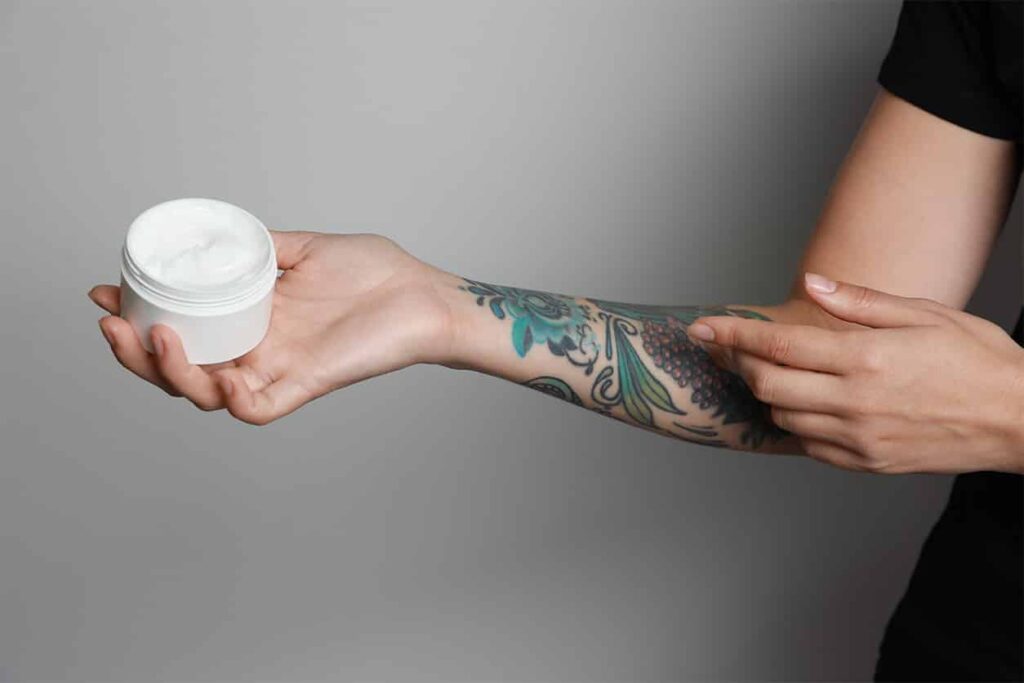
Tattoos are an exciting form of self-expression, and proper healing is key to preserving your tattoo’s clarity, color, and detail. The healing timeline depends on multiple factors, such as tattoo size, placement, and individual health, but generally, surface healing takes 2 to 4 weeks, while deeper skin layers may require 3 to 6 months to fully recover.
Tattoo Healing Process: An Overview:
Tattooing involves needles piercing the skin to deposit ink into the dermis layer, causing a controlled wound. Healing time varies depending on the tattoo’s depth and intricacy, but generally follows four main stages:
The Four Stages of Tattoo Healing:
Each stage has unique characteristics, with specific care practices to support healing.
Initial Stage: Days 1–6 (Inflammation):
- What to Expect: Right after your session, the tattoo will feel sore, red, and swollen, similar to a mild sunburn. It may ooze a mix of plasma, blood, and ink (known as “weeping”), which is normal as the body starts healing.
- Care Tips:
- Leave the bandage on for the first 2-24 hours as advised by your artist.
- After removing the bandage, gently clean the tattoo with lukewarm water and mild, fragrance-free soap. Pat it dry with a clean towel or paper towel.
- Apply a thin layer of aftercare ointment recommended by your tattoo artist.
Also Read:How Many Years To Heal From Diverticulitis Reddit – Insights and Advice!
- Do’s and Don’ts:
- Do wash your hands before touching the tattoo to avoid infection.
- Don’t use harsh soaps, scrubs, or alcohol-based products.
- Avoid submerging the tattoo in water, such as pools, hot tubs, or baths.
Scabbing Stage: Days 7–14 (Scabbing and Peeling):
- What to Expect: As the skin repairs itself, scabs and flakes will form. This stage is often itchy as dead skin and scabs fall away, revealing fresh layers of skin.
- Care Tips:
- Moisturize with a fragrance-free lotion to ease itchiness.
- Avoid picking at scabs, as this can cause scarring or loss of ink.
- Wear loose, breathable clothing to reduce friction on the tattoo.
- Do’s and Don’ts:
- Do continue to keep the area clean and gently moisturized.
- Don’t scratch or pick at the peeling skin; allow it to fall off naturally.
- Avoid exposure to direct sunlight, as this can fade or damage the healing tattoo.
Dullness Stage: Days 15–30 (New Skin Formation):

- Care Tips:
- Keep moisturizing the tattoo to maintain hydration.
- Protect the tattoo from UV rays with clothing (avoid direct sunscreen until it’s fully healed).
- Do’s and Don’ts:
- Do be patient with the “cloudy” look—it will eventually return to vibrancy as the skin thickens.
- Avoid unnecessary pressure or stretching on the area.
Full Healing Stage: Weeks 4–6 (Maturation):
- What to Expect: During this phase, the top layers have healed, and your tattoo should start
- looking more defined and vibrant. However, the deeper layers still require time to recover fully.
- Care Tips:
- Avoid sun exposure as much as possible or wear protective clothing.
- Moisturize regularly to keep the skin healthy.
- Apply sunscreen to preserve your tattoo’s colors once your tattoo is fully healed (usually after six weeks).
- Do’s and Don’ts:
- Do treat your tattoo with care and continue a consistent skincare routine.
- Don’t go for touch-ups before six weeks, as your skin is still sensitive.
Also Read:The Ocean Healed My Eczema – A Natural Remedy for Skin Relief!
Factors That Influence Tattoo Healing Time:
Healing times are estimates and vary based on personal factors and tattoo specifics:
- Tattoo Size and Complexity: Larger and more intricate tattoos require more healing time.
- Tattoo Placement: Areas prone to friction (like joints or feet) tend to heal slower.
- Ink Colors: Darker ink can take longer to settle than lighter colors, which may speed up healing
- slightly.
- Skin Type: Individuals with sensitive or easily irritated skin may experience a longer healing period.
- Overall Health: People with a strong immune system, good hydration, and healthy skin recover faster.
- Aftercare: Diligent, appropriate aftercare can significantly affect the healing process.
Signs of a Normal Healing Tattoo vs. Infection:
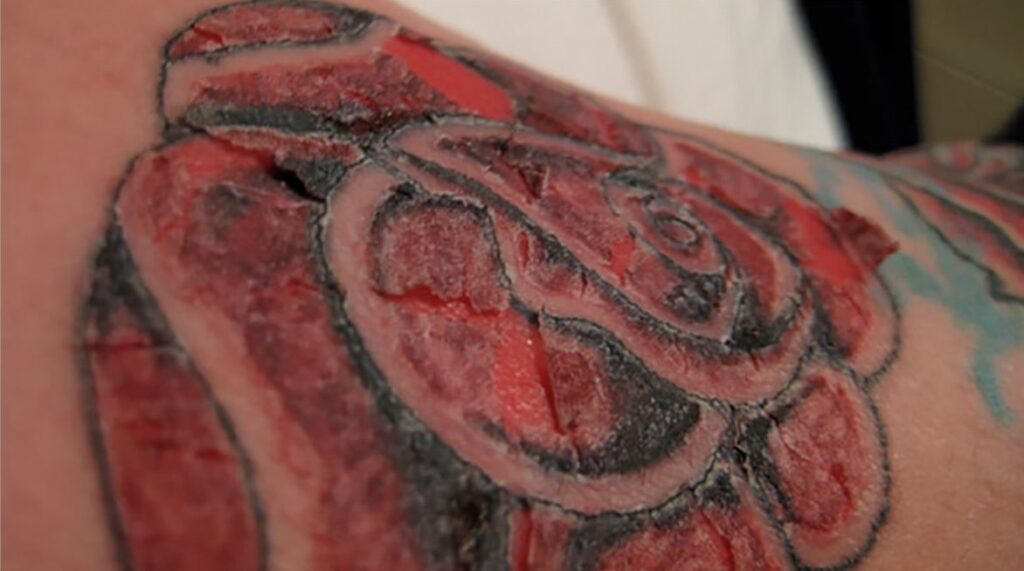
Knowing what to expect during healing will help you spot any issues early on. While redness, swelling, and minor peeling are normal, look out for signs of infection:
- Normal Signs: Mild redness, scabbing, flaking, and dull appearance.
- Signs of Infection: Severe redness extending beyond the tattoo area, intense swelling, greenish or yellow pus, extreme pain, or fever.
If you notice these symptoms, consult a healthcare provider immediately.
Tips for Speeding Up the Healing Process:
Supporting your body’s natural recovery can speed up tattoo healing:
- Stay Hydrated: Drinking water helps keep skin cells hydrated, aiding in quicker recovery.
- Eat a Nutrient-Rich Diet: Foods high in vitamins A, C, and E, as well as zinc, support skin repair and regeneration.
- Avoid Strenuous Exercise: High-intensity workouts can irritate the tattoo, especially if it’s on a high-movement area.
- Wear Loose Clothing: Avoid tight clothing that could rub against the tattoo.
Long-Term Tattoo Care Tips:
After the healing process is complete, proper care helps maintain your tattoo’s vibrancy:
- Apply Sunscreen: Tattoos can fade when exposed to UV rays, so always use sunscreen.
- Moisturize Regularly: Keeping your skin healthy will preserve tattoo quality.
- Consider Touch-Ups: Some tattoos may require a touch-up after initial healing to correct any fading.
Also Read: Healing Hands Massage – Experience the Power of Therapeutic Touch!
Final Thoughts
Healing a tattoo takes patience and care. By following the suggested aftercare routine and knowing what to expect in each healing stage, you can ensure that your tattoo heals well and stays vibrant for years. A bit of effort and attention during this period will pay off, giving you a piece of art that’s worth the wait.
FAQ’s
1. How long does it take for a tattoo to heal on the surface?
Surface healing usually takes 2 to 4 weeks, though deeper layers may take 3 to 6 months to fully recover.
2. What can I expect in the first week after getting a tattoo?
In the first week, you may experience redness, soreness, swelling, and some “weeping” of fluids as your body begins healing.
3. What are the signs of a normally healing tattoo versus an infected one?
Normal healing includes mild redness and scabbing, while infection signs are severe redness, pus, intense pain, or fever.
4. How can I care for my tattoo during the scabbing and peeling stage?
Keep the tattoo moisturized, avoid scratching, and let the scabs fall off naturally to prevent scarring or ink loss.
5. How can I help speed up my tattoo’s healing process?
Stay hydrated, eat a nutrient-rich diet, avoid strenuous activity, and wear loose clothing to support healing.
Conclusion
On average, a tattoo takes about 2 to 4 weeks to heal on the surface, while deeper layers can take up to 3 to 6 months to fully repair. By following recommended aftercare and practicing good hygiene, you can support each stage of the healing process and ensure your tattoo stays beautiful. Although the healing journey can require patience, the final result is well worth the wait—a piece of art that becomes a permanent part of your story.
